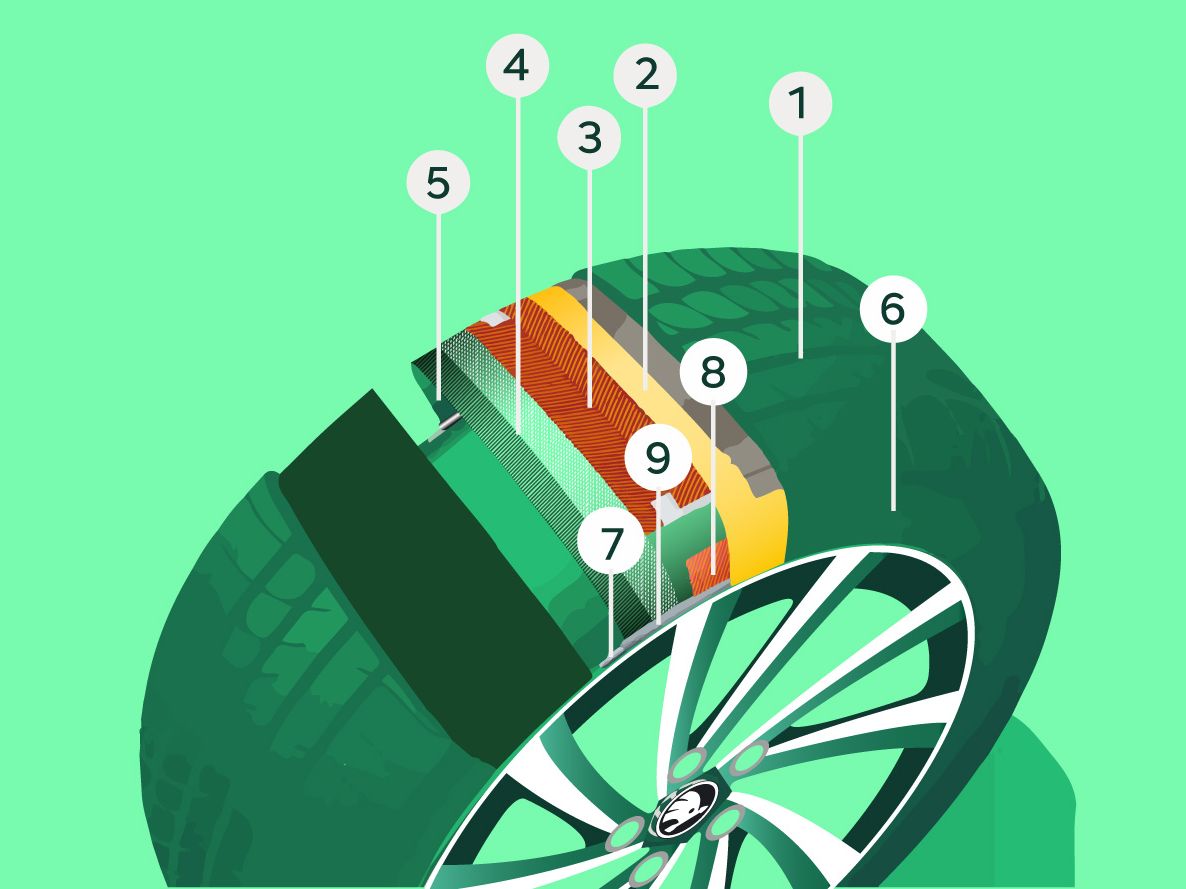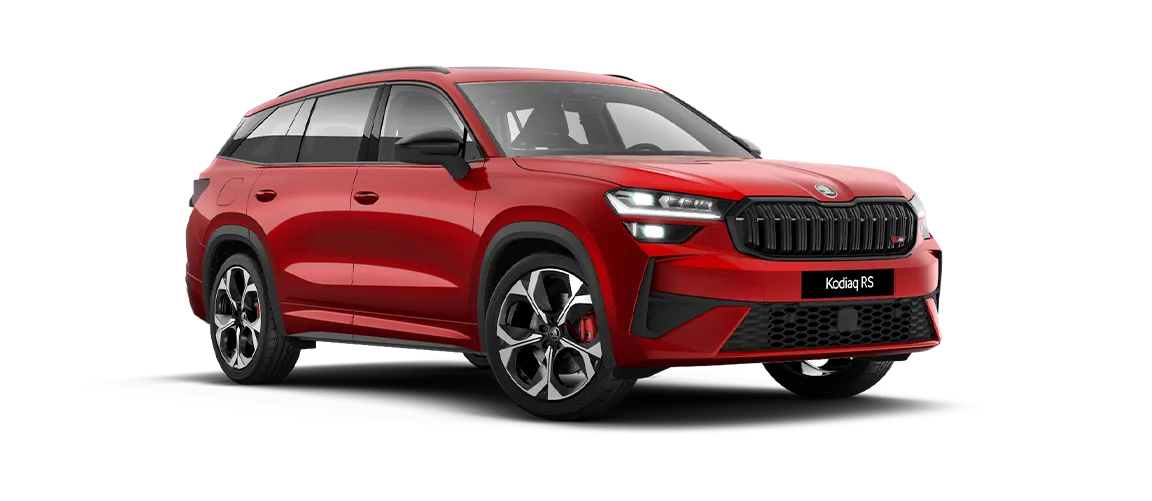Your tyres are your only contact with the road. Unpack what exactly goes into your tyres here at Škoda.
225/45 R17 94 W
explained in seven steps
What do the numbers on my tyres mean? In addition to the manufacturer and product name, you will find a lot of important tyre information, such as the type of tyre, rim diameter and maximum speed on your tyres.

Tread depth and braking distance
Adequate tread depth is essential to your safety as the tyre tread helps to remove water from the road surface allowing your tyre to grip the road. As your tyre tread depth wears down, its ability to remove water and grip in the wet is reduced, compromising your safety.
The recommended minimum tread depth for a car tyre is 1.6mm across the central three quarters of the tyre around its entire circumference.
We'll gladly check your tyres tread depth, but if you'd like to do it yourself all you need is 20 cents.
Checking that your tyres comply with the minimum tread depth regulations is easy and should be carried out on a regular basis, we recommend once a month. The most accurate method is to use a calibrated tread depth gauge, checking the depth in at least three points around the tyre.
If you don't have a calibrated tread depth gauge, a quick and easy way to check is by using a 20 cents coin. Simply place the coin into the main tread of your tyre. If the marked rim of the coin doesn't totally disappear into the tread, it should be checked by your authorised Volkswagen service centre.
If your tyres need to be replaced, we have selection of tyre brands at competitive prices.
Tyre damage
Damages to the tyre put your safety and the safety of fellow road users at risk.
Abnormal tyre wear
If the wear pattern of your car tyre is unevenly distributed over the entire tread, then you should be aware: You can find out which irregular wear patterns you have to deal with here.
There are many layers hidden inside your car tyre
Every tyre is made up of a contact surface and a tyre substructure

Contact surface and tyre substructure (carcass)
1. Tread - for an effective grip on the road and for taking up and draining water 2. Jointless bandage - enables high speeds 3. Steel cord belts layers - optimise driving stability and rolling resistance 4. Textile cord insert - maintains the shape of the tyre, even at high interior pressure 5. Inner liner - renders the tyre airtight 6. Side wall - protects against lateral damages 7. Apex - supports driving stability and steering behaviour and comfort response 8. Steel core - ensures a firm fit to the rim 9. Tyre bead reinforcement - supports driving stability and precise steering behaviour
How to increase tyre service life
A tyre’s maximum service life is six years – that’s assuming that they’re not damaged, the tread hasn’t been worn down earlier. The DOT number on your tyres will provide information about their age. Here are a few tips for a long tyre service life
Avoid racing starts and do not drive with hot tyres.
Do not hit the kerb when parking: It may damage the rubber outer layer and the inner structure of your tyres.
Lower pressure - higher degree of wear. Check your tyre pressure on a regular basis and increase it if you are driving with a heavy load. But be careful: Too high a pressure can also be damaging.
Measure the tread depth on a regular basis and check your tyres for damages and deformations.











